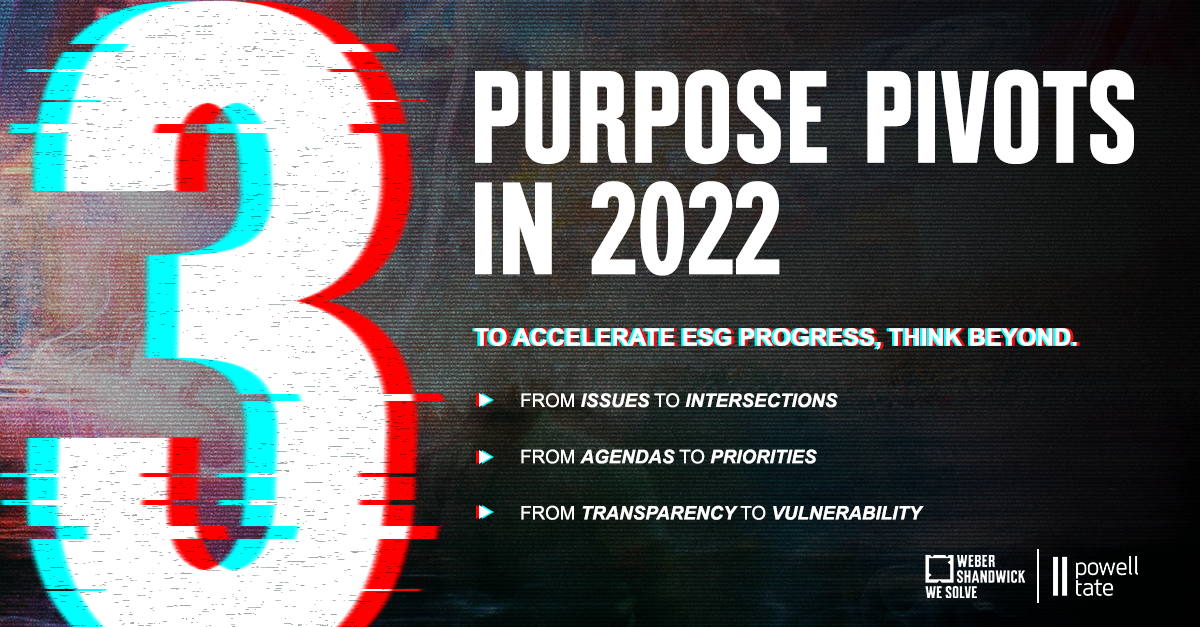
Sign up for Powell Tate Insights for monthly fresh takes on disruptions, innovations and impact in public affairs.


As we get 2022 underway, it’s tempting to be dispirited by the state of the world. But we’re optimists, so our team is focusing our energy on a critical question:
What’s possible if we collectively navigate today’s challenges to find opportunity in the disruption?
The 2020s have been called the “decisive decade,” because it’s critical that we make progress on a shared global agenda for sustainable development, especially to address climate change and accelerate a transition to a net zero emissions future by mid-century.
The start of this decade has been marked by the COVID-19 health crisis and a backslide on progress across key issues from poverty and malnutrition, to gender and LGBTQ+ equality, to health equity, to early education, to clean water access and more.
There is much to be done.
So, how can each of us do our part to rebuild from the pandemic and realize a safe, sustainable and equitable future?
2022 is a pivotal year to accelerate solutions to the interrelated challenges of climate change, structural inequity and misinformation. People expect organizations and leaders in 2022 to have moved well beyond identifying these problems and formulating commitments, goals and roadmaps. Employees, consumers, investors and activists expect tangible incremental progress now, not in 20 years.
The pressure is on leaders to show how they are helping to accelerate progress.
We must evolve the purpose communications playbook to meet this moment — where problems are complex, there are no easy answers and people are calling for impact. Here are three essential pivots communicators can make to engage stakeholders in meaningful ways this year:
Modern challenges are systemic, interconnected and paradoxical. We must understand and discuss how issues intersect and probe those intersections through both data and human intelligence to ensure we frame the right problems to solve.
Organizations have limited resources and stakeholders have limited attention. We can’t tackle everything at once and not all challenges are created equal. Share why you’ve chosen to focus on certain issues and be prepared to share (and defend) why you aren’t focused on others.
A report on environment, social and governance (ESG) or sustainable development goal metrics provides a narrow view of activities and outcomes. But real collective learning is possible when organizations share and compare working hypotheses, bets, failures and pivots.
If we evolve our communications in these ways, we’ll be able to better translate critical signals, make sense of complicated social and environmental issues, frame the practical agenda for action and bring together the right stakeholders to co-create the solutions we need to make the world a better place.

Author
Kate specializes in developing strategies and integrated engagement campaigns that help purpose-driven clients build brands and advance sustainable development.
Sign up for Powell Tate Insights for monthly fresh takes on disruptions, innovations and impact in public affairs.
Managing risk & reputation in an election year
Throughout the course of the 2024 election cycle, our Global Elections Task Force has been providing data-driven election insights, analysis, and real-time counsel to our team and clients. Get timely insights on our Election Matters home page.